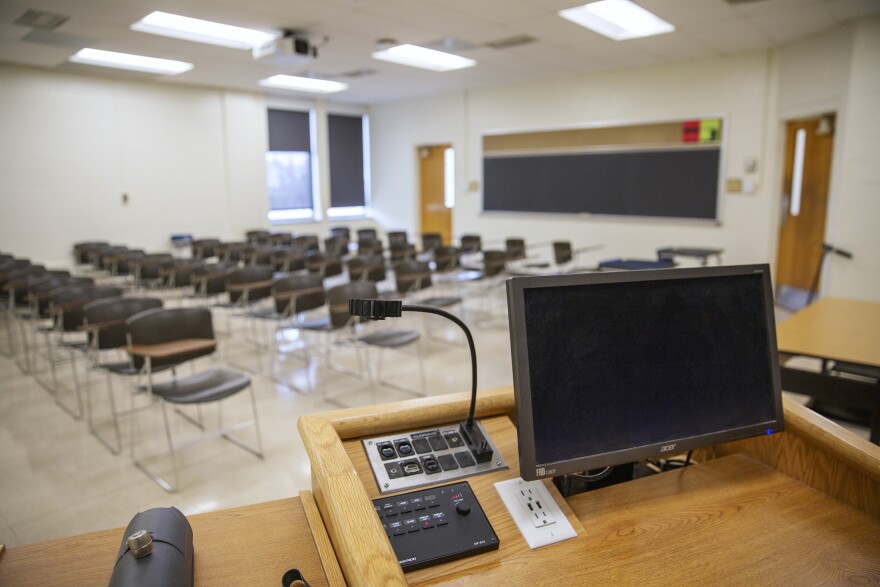With nearly all classes finalized for the fall semester, Penn State says about half the courses will be either fully in-person or a combination of in-person and remote learning. Most of these classes are going to be small sections that serve upper level students, university president Eric Barron told the Board of Trustees Friday.
Barron said about 18% of the courses will be fully in-person and 28% will use the hybrid mode. In addition, about a third of all fall courses will be remote synchronous, taking place on a fixed schedule over video conference. The remaining 15% will be web-based courses that are asynchronous.
“The key here is flexibility to meet students where they are,” Barron said Friday. “Students can start at home, continue at home, start at any Penn State campus, including the world campus. This full set of options are designed for us to be nimble and flexible and to be able to pivot if necessary while still getting our students to their objectives.”
Barron said, with social distancing, the reduction in space is a limiting factor in deciding which formats courses will take. The university previously said classes with more than 250 students will be online. Barron added Friday that most of those in-person or hybrid courses will be for upperclassmen.
“It is not possible with all the rules and need for social distancing for large classes -- which tend to be classes for beginning students -- it's impossible for us to do those in-person,” he said.
Penn State also announced Thursday that it will use the Nittany Lion Inn for additional classroom space and single unit housing for on-campus students. The hotel has 233 rooms and was previously planned as an isolation space for students. Penn State said it will now have students isolate at the Eastview Terrace residence hall, where more than 800 students can be accommodated in single rooms.
Barron also told the board that the number of accepted students who have paid their enrollment deposits remains on the same level as this time in 2019, which he said was a promising figure, given the impact of COVID-19.
The Board of Trustees also approved a reduction in room and board rates for the fall semester, since the university will go fully online after Thanksgiving break this year. A mid-level meal plan and standard double room combination will cost $5,013, a 14.7% reduction compared to the previously approved rate for this fall.
Both Barron and Board Chair Mark Dambly spoke about the university’s efforts to combat bias and racism. The board voted in favor of an “aspirational goal” to have at least half of its members to be from underrepresented groups by 2025. According to the university, 32% of the board is currently from underrepresented groups, including race, ethnicity and gender.
Penn State Trustee Brandon Short, who chairs a Board of Trustees oversight group on the new Presidential Commission on Racism, Bias and Community Safety commission, said it’s a meaningful goal.
“The vote that we had today, to expand the number of diverse seats on our board has far-reaching effects, more than what most realize,” Short said. “It affects the hearts, minds, psyche of our underrepresented students.”






